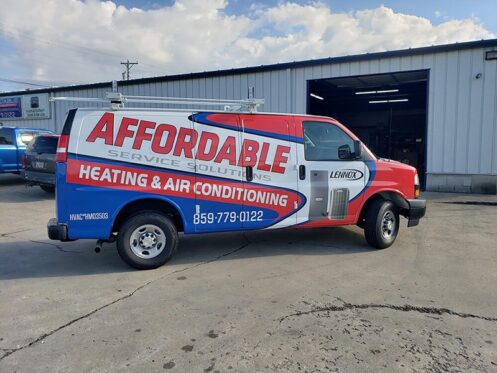Geothermal HVAC systems offer an eco-friendly alternative to traditional heating and cooling methods. However, a common question arises: Can I install a geothermal HVAC system in my existing home? Let’s explore the feasibility, benefits, challenges, and considerations associated with installing a geothermal HVAC system in your current home.
Understanding Geothermal HVAC Systems
Before delving into whether a geothermal HVAC system can be installed in your home, let’s take a minute to learn how these systems work. Geothermal HVAC systems tap into the consistent and renewable heat energy stored beneath the Earth’s surface. They use a network of underground pipes, known as a ground loop, to transfer heat to and from the ground.
During the winter, the system extracts heat from the ground and delivers it to the home’s interior. In the summer, the process reverses—the system removes heat from the home’s interior and transfers it into the cooler ground. This cycle is highly efficient because it capitalizes on the Earth’s stable temperature to provide consistent heating and cooling throughout the year.
Feasibility for Existing Homes
In short, it is definitely possible to install a geothermal HVAC system in an existing home. However, several factors must considered before making this decision. Here are a few things to think about:
Available Space
Geothermal systems require ample yard space for the installation of the ground loop. Horizontal ground loops need more space than vertical ones, making them a better choice for large properties. Vertical loops require drilling boreholes, which may impact the landscaping and the upfront costs.
Soil Composition
The soil composition on your property plays a role in the efficiency of the geothermal system. The soil’s conductivity and heat transfer capability impact the system’s performance. A professional assessment of your soil is crucial to determine the viability of a geothermal system.
System Retrofitting
Retrofitting an existing home for a geothermal HVAC system can be more complex than installing it during new construction. Ductwork, insulation, and other components may need adjustments to accommodate the new system.
Benefits of Geothermal HVAC Systems
Energy Efficiency
Geothermal systems are incredibly energy-efficient because they rely on a renewable energy source—the Earth’s heat. This can lead to significant reductions in energy bills over time.
Environmental Friendliness
Geothermal systems produce fewer greenhouse gas emissions than traditional HVAC systems, contributing to a smaller carbon footprint.
Consistent Comfort
Geothermal systems provide consistent heating and cooling, eliminating the temperature fluctuations often associated with traditional HVAC systems.
Long-Term Investment
Geothermal systems are built to last for up to 50 years of use. The components are located indoors or underground, reducing wear and tear from external weather conditions.
Challenges and Considerations
Initial Cost
The initial cost of installing a geothermal HVAC system is significantly higher than traditional systems. That said, the long lifespan of geothermal systems and the energy savings they yield may offset the steep upfront cost.
Installation Complexity
Retrofitting an existing home with a geothermal system can be more complex and expensive due to the need to integrate the system with the existing infrastructure.
Maintenance
While geothermal systems require less maintenance than traditional systems, they still need periodic checks and servicing to ensure optimal performance.
Regulatory Approvals
Depending on your location, there might be zoning regulations, permits, and environmental assessments required for installing a geothermal system.
Installation Process
The installation process of a geothermal HVAC system in an existing home involves the following key steps:
- Site assessment: A qualified professional will assess your property to determine its suitability for a geothermal system. This process includes analyzing soil composition, available space, and other factors.
- Loop installation: Depending on your available space and your budget, either a horizontal or vertical ground loop will be installed. Horizontal loops are laid in trenches, while vertical loops involve drilling boreholes.
- Indoor components: The indoor components, including the heat pump and distribution system, will be installed or integrated with your existing HVAC system.
- Testing and commissioning: After installation, the system will undergo testing to ensure it’s operating efficiently and effectively.
Is Your Home a Good Fit?
Installing a geothermal HVAC system in an existing home is possible, though it comes with challenges and considerations. While the upfront costs and complexities might seem daunting, the long-term benefits make geothermal systems an attractive option for some homeowners. Before embarking on this journey, consult with qualified professionals who can guide you through the process and help you determine if a geothermal HVAC system will work in your existing home. If you’re in Richmond, KY or the surrounding counties, the trusted professionals at Affordable Service Solutions Heating & Air Conditioning can guide you through the installation, repair, and maintenance of all heating and cooling systems, including geothermal HVACs. We also offer indoor air quality services. Contact Affordable Service Solutions Heating & Air Conditioning today to learn more about geothermal HVACs!

